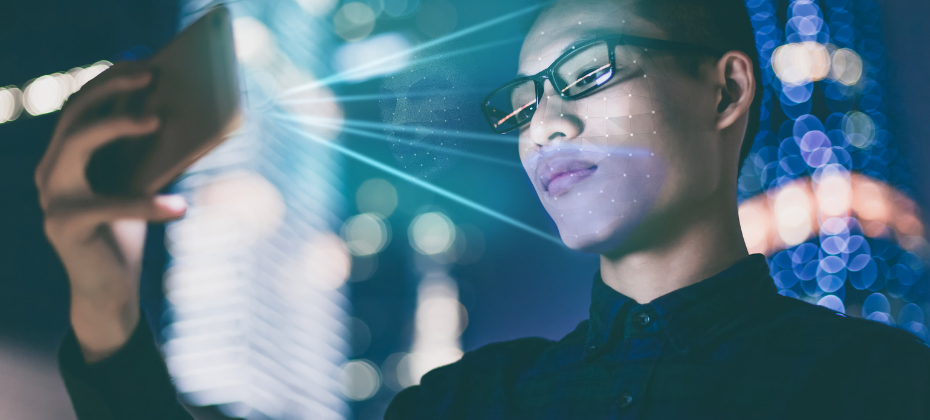Financial Services

Experian and Plaid are teaming up to power smarter, faster, and more inclusive lending — fueled by real-time cash flow insights. The financial landscape is becoming more dynamic and digitally connected. Consumers are increasingly turning to digital platforms not only to pay bills and track spending, but to better understand their financial health, monitor their credit standing, and plan confidently for the future. This evolution presents a timely opportunity for innovation in underwriting — one that empowers consumers to take control of their financial futures and enables lenders to make faster, smarter, and more inclusive decisions. What happens when the leading global data and technology company joins forces with the largest open banking network in the world? Experian and Plaid are coming together to solve some of the most pressing challenges lenders face, bringing cash flow insights into credit decisions, seamlessly. Smarter lending: Elevating the credit decision process For lenders seeking a holistic view of borrowers to make faster, more informed decisions, this new collaboration is a game-changer. Experian and Plaid are combining real-time, unmatched cash flow data and analytics to help lenders improve decisioning, pinpoint risk precisely, and drive financial inclusion. This marks a pivotal shift in how credit is assessed, moving us toward faster, and fundamentally smarter lending decisions. This strategic collaboration delivers real-time cash flow insights in a comprehensive solution, built on core principles designed to directly enhance your lending capabilities: Speed and simplicity: Driving efficiency with seamless integration In today’s fast-paced financial landscape, efficiency in underwriting isn’t just an advantage; it’s a necessity. Our combined solution prioritizes speed and simplicity by offering easy integration through APIs. This ensures fast access to meaningful risk insights, streamlining your workflows. Imagine easily leveraging real-time cashflow risk insights directly into your existing processes for faster and smarter lending decisions. This is about delivering modern infrastructure that allows you to move at the speed of today's market, empowering your business to expand with confidence. Broader visibility: Unveiling a holistic consumer view Traditional credit scores are a reliable, crucial tool for measuring a borrower’s creditworthiness. When coupled with real-time cashflow data and risk insights, lenders are empowered with broader visibility, bringing to light a more holistic view of a borrower’s current financial reality and opportunities that may have been missed. You gain a comprehensive consumer financial picture, allowing for more precise identification of both strong financial capacity and potential risks, ultimately helping you target and acquire customers who align with your growth objectives. Smarter decisions: Enhancing models with combined intelligence The power to make truly informed decisions hinges on the quality and depth of your data. Without robust insights, risk models can be limited, impacting precision and speed. With Experian's advanced cash flow analytic capabilities and Plaid's streamlined access to real-time cash flow data via Consumer Report, you can enhance your risk assessment for smarter decisions. This synergy empowers financial institutions to expand credit access and uncover hidden risks, leading to more precise underwriting. It’s about leveraging advanced analytics in real-time to drive improved decision-making and build stronger portfolios. More inclusive lending: Expanding access, responsibly A significant challenge in lending is ensuring access for all creditworthy individuals, including those with limited traditional credit histories who may be overlooked. This represents an untapped market and a vital opportunity for responsible growth. Our solution champions more inclusive lending, enabling you to reach underserved communities and empower consumers who demonstrate strong financial capacity. This not only fosters stronger portfolios but critically helps your business grow by efficiently acquiring customers across a broader spectrum. Proven trust: Lending with confidence In the financial industry, the bedrock of any solution is trust – in the data, security, and partners. Lenders require unwavering confidence in the tools they adopt. This collaboration is built on proven trust, leveraging the reach, reliability, and security of two of the most trusted names in financial services. Experian’s expertise in credit data and consumer protection, combined with Plaid’s modern infrastructure and trusted open banking network, offers unparalleled assurance. You can securely integrate these powerful insights, knowing you are backed by industry leaders committed to best-in-class security and compliance, enabling your business to grow with confidence without compromise. Smarter lending starts now The evolution of underwriting demands a more dynamic, inclusive, and precise approach. With Experian and Plaid, you're not just adapting to change; you're leading it. Empower your organization to approve more borrowers, reduce risk more effectively, and make smarter, faster decisions for sustainable success. Ready to transform your lending strategy? Learn more about how to bring cash flow insights into your credit decisions seamlessly. Learn more

Managing credit limits effectively can be a game-changer for both consumers and financial institutions. Understanding the benefits and behaviors associated with increased credit limits helps in appreciating the long-term impacts of this strategy. Proactive credit limit management offers numerous advantages that can significantly improve financial health and stability.

Customer retention is crucial for lenders to maximize lifetime value, especially during economic uncertainty. Increasing customer retention rates by just 5% can boost profits by 25% to 95%. However, many lenders struggle with loyalty, as seen in Q2 2024 when mortgage servicers’ retention rates for refinances dropped to 20%, the second lowest in 17 years. Nonbanks and banks also saw significant declines. This is due to increased competition, changing economic conditions, and a lack of personalization. Key strategies for improving customer retention Lenders can improve retention by leveraging data for personalization, maintaining consistent communication, offering loyalty rewards, and utilizing retention triggers. Leverage data for personalization. Use customer data to offer tailored products and refinancing options based on financial behaviors. Using credit attributes, trended data and alternative credit data (alternative financial services data, cashflow attributes, etc.) can help provide deeper insights of your customers. Maintain consistent communication. Keep customers informed with regular updates about interest rate changes or new loan products. Use a variety of communication channels, including email and in-app messaging, to ensure customers are kept in the loop. Ensure your customer service team is always available and responsive, offering clear answers to any financial concerns. Offer loyalty rewards. Develop programs that reward repeat business and referrals. Offer special rates or discounts for returning customers or for those who refer friends and family to your services. Increase customer lifetime value (LTV) by offering additional services like financial planning or credit score monitoring. Utilize retention triggers. Identify key events for engagement with automated retention triggers. For example, a borrower who has a mortgage with a fixed rate may be less likely to consider refinancing unless prompted. Experian’s Retention TriggersSM can notify lenders when refinancing might be beneficial to their customer, offering them personalized incentives or new product options at the right time. Why Experian’s Retention Triggers? By integrating Experian’s Retention Triggers, lenders can keep borrowers engaged, increase retention, and boost profitability even in tough economic times. Advanced data insights: Gain deeper insights into your customers’ behavior to identify those at risk of leaving and take proactive action. Personalized engagement: Automate personalized communications based on customer behaviors, ensuring timely engagement. Increased revenue: By offering personalized, timely and relevant offers, you can increase the likelihood of retaining your customers and growing your revenue. Make customer retention a priority In today’s challenging economic climate, lenders who focus on personalized experiences, consistent communication, and relevant offers will stand out and retain borrowers. Leverage tools like Experian’s Retention Triggers to proactively engage customers, reduce churn, and foster long-term relationships for increased profitability and success. Learn more

In today's fast-paced financial landscape, demand deposit accounts (DDAs) have become a cornerstone for both consumers and financial institutions. These accounts, which include checking, savings, and money market accounts, offer the flexibility of accessing funds on demand without prior notice. As the financial industry evolves, the demand for consumer DDAs continues to grow, driven by the need for convenient and accessible banking solutions. Why DDAs are critical for financial institutions As a financial institution, consumer DDAs are crucial for you for several reasons: Customer Acquisition and Retention: DDAs can serve as the first point of contact between customers and financial institutions. By offering attractive DDA options, you can attract new customers and retain existing ones, fostering long-term relationships. Revenue Streams: DDAs generate revenue through various channels like interest on account balances, and also provide opportunities for cross-selling other financial products and services, enhancing overall profitability. Data Insights: DDAs offer valuable insights into customer behavior and spending patterns. Financial institutions can leverage this data to tailor their products and services, improve customer satisfaction, and develop targeted marketing strategies. Liquidity Management: DDAs help you manage liquidity by providing a stable source of low-cost funds. The deposits in these accounts can be used to support lending activities and other financial operations, ensuring your financial stability. These points highlight the strategic importance of consumer DDAs in the overall business model of financial institutions, making them a critical component for success. Attracting and retaining Gen Z and millennial customers Gen Z and Millennials are more likely to change financial institutions frequently. Capturing this audience is essential, as Gen Z will likely be the largest and wealthiest generation in the future. Members of this generation value digital capabilities, personalized experiences, and flexibility, often switching banks to find better services and offers. Over 40% of Gen Z switched financial institutions between 2023-2024 1. A few strategies for attracting and retaining these critical generations include: Digital-First Approach: Both Gen Z and Millennials have grown up with technology and expect seamless digital experiences. Offering robust online and mobile banking platforms with features like digital account opening, real-time transaction alerts, and easy fund transfers is crucial. Credit Card Cross-sell Opportunities: Among Gen Z and Millennials, credit cards continue to be the most in-demand banking product2. By pairing attractive DDA offers with compelling credit cards, you can pave the way for DDA opportunities with current card-only customers. Personalization: These generations value personalized experiences. You can use advanced data analytics to offer customized financial products and services that meet individuals’ needs and preferences. Personalized communication and tailored offers can significantly enhance customer satisfaction and loyalty. Financial Education and Tools: Providing educational resources and tools to help manage finances can be a significant draw. Gen Z and Millennials appreciate institutions that offer budgeting tools, financial literacy programs, and personalized financial advice, and are likely to stick with institutions that also act as a trusted advisor. Innovative Features: Offering innovative features like integration with digital wallets, buy-now-pay-later options, and family banking tools can appeal to the tech-savvy nature of these generations. Keeping up with the latest technology trends ensures that the institution remains relevant and attractive. What consumers want in a demand deposit account With today’s high-interest rates and digital banking services, consumers are willing and able to move their money now more than ever. It’s important to understand what a consumer values in a DDA to stay competitive: Accessibility and Convenience: Consumers want easy access to their funds at any time, whether through ATMs, online banking, or mobile apps. The ability to manage their accounts and perform transactions seamlessly is a top priority3. Interest Earnings: While not all demand deposit accounts offer interest, many consumers appreciate the opportunity to earn interest on their balances. This feature can make a DDA more attractive compared to non-interest-bearing accounts3. Security and Fraud Protection: Security is paramount for consumers. They want assurance that their funds are protected against fraud and unauthorized access, with features like real-time alerts and robust fraud detection systems3. These features collectively enhance the appeal of demand deposit accounts, making them more attractive to consumers seeking reliable and efficient banking solutions. How Experian Partner Solutions can help We offer a suite of tools and services designed to help financial institutions attract and retain your DDA customers: Advanced Data Analytics: We leverage extensive data analytics to understand consumer behavior and preferences. This allows you to create highly targeted and personalized offers that resonate with potential customers. Personalized Financial Insights: By leveraging comprehensive financial data, we can help you offer personalized insights and action plans that help customers manage their finances more effectively. This personalized approach can significantly enhance customer satisfaction and loyalty. Identity Monitoring: Our credit and identity alerts empower your consumers to spot potential fraud, assess risks, and respond before they become a victim of identity theft. By personalizing these alerts, we can drive consumers to your portal to review their risk level and respond in real time, giving you opportunities through additional touchpoints. Financial Wellness Solutions: We offer comprehensive credit and financial management tools to help your customers better understand the credit environment and learn how they can most effectively manage their finances. Educated, financially healthier customers are less likely to miss payments and ultimately pose less risk to your business. By utilizing these capabilities, we can help you attract and retain customers for DDA accounts, ultimately driving growth and enhancing customer satisfaction. The demand for consumer DDAs is on the rise, driven by the need for accessible and flexible banking solutions. Financial institutions like credit unions and banks attract new deposits by offering competitive interest rates, seamless digital banking experiences, and personalized financial products. As consumers seek more convenience and value, financial institutions must innovate to meet evolving expectations and retain deposit growth. We offer the tools and insights needed to navigate this evolving landscape, helping you thrive in a competitive market. This article includes content created by an AI language model and is intended to provide general information. References [1] Why Gen Z is Switching Banks | Chime [2] 2025 Will Be the Year of the Credit Card | The Financial Brand [3] What Is a Demand Deposit Account? | Banking Advice | U.S. News

With cybersecurity threats on the rise, organizations are turning to token-based authentication as a secure and efficient solution to safeguard sensitive data and systems. Data breaches impacted 1.1 billion individuals in 2024, a staggering 490% increase from the previous year.1 Token-based authentication is a method of verifying a user's identity through digital tokens rather than traditional means such as passwords. These tokens are temporary and serve as access keys, allowing users to securely interact with systems, applications, and networks. The goal of token authentication is to strengthen security while improving the user experience. Instead of relying solely on static credentials (like passwords), which can be intercepted or stolen, leveraging a type of multi-factor authentication like tokens adds an additional layer of security by functioning as dynamic access credentials. How token-based authentication works Token authentication unfolds through a series of steps to ensure robust security. Here's a simplified breakdown of how it works in practice: User request and authentication: When a user attempts to log in, they provide their credentials (e.g., username and password). These credentials are verified by the authentication server. Token generation: After verifying the user's credentials, the server generates a token — a cryptographically secured string often containing information like the user's ID and permissions. Token sent to the user: The generated token is sent back to the user or their device to confirm authentication. Token usage for access: Now authenticated, the user uses the token to access the system or application. The token is passed along with each request to ensure the user is authorized to proceed. Token validation: Each time a token is presented to the server, its integrity and expiration are verified. If the token is valid, access is granted; if not, the session is terminated. Token expiration and renewal: Tokens are typically temporary and expire after a set period. Users must either re-authenticate or renew the token for continued access. This limits the time window during which a stolen token can be misused. Types of token authentication methods Token authentication comes in different forms to meet various use case requirements. Common types include: JSON Web Tokens (JWT) Lightweight, self-contained, and easily transferred between clients and servers, JWT is one of the most widely used token formats. It includes claims, which are bits of information about a user encoded within the token, such as roles and permissions. Example: A financial application uses JWTs to ensure only registered users can access private account data. OAuth tokens OAuth is an industry-standard authorization protocol that uses tokens to grant limited access to applications without revealing the user's credentials. It’s often used for third-party service integration. Example: When you log into an e-commerce platform using your Google credentials, OAuth tokens authorize access. Session tokens These are temporary tokens stored on the server to track authenticated sessions, commonly used in web applications to ensure secure browsing. Example: Online banking platforms rely on session tokens for secure user sessions. Refresh tokens Refresh tokens are designed to renew access tokens without requiring the user to log in repeatedly. They extend session durations while maintaining a high-security standard. Example: A subscription service app uses refresh tokens to maintain a seamless user experience without frequent logouts. Benefits of token-based authentication Token-based authentication offers several advantages that make it a preferred security measure for organizations of all sizes. Enhanced security: Tokens reduce the risk of breaches as they are temporary and encrypted. They’re also specific to sessions, applications, or devices, meaning unauthorized users cannot reuse stolen tokens effectively. Elimination of password reliance: Tokens reduce dependence on static passwords, which are often reused and susceptible to brute-force attacks. This bolsters an organization’s overall cybersecurity posture. Improved user experience: Token authentication allows for more seamless interactions by minimizing the need for repeated logins. With features like single sign-on (SSO), users enjoy convenient access to multiple platforms with a single token. Scalability: Tokens are flexible and can adapt to varied business use cases, making them ideal for organizations of all scales. For instance, application programming interfaces (APIs) and microservices can communicate securely via token exchanges. Supports compliance: Token-based authentication helps organizations meet regulatory compliance requirements by offering robust access control and audit trails. This is critical for industries like finance, healthcare, and e-commerce. Cost efficiency: While implementing token-based authentication may require an initial investment, it reduces long-term risks and costs associated with data breaches, system downtime, and customer trust. How Experian can help strengthen your authentication process At Experian, we recognize that strong security measures should never compromise the user experience. That's why we offer cutting-edge identity solutions tailored to meet the needs of organizations. Our tools allow you to integrate token-based authentication seamlessly into your systems while ensuring compliance with security best practices and industry regulations. Are you ready to take your business's security and user experience to the next level? Visit us online today. Learn more 12024-2025 Data Breach Response Guide, Experian, 2024. This article includes content created by an AI language model and is intended to provide general information.

The financial services industry faces increasing pressure to innovate in today's fluctuating interest rate environment. For regional banks and credit unions, effective deposit growth strategies involve more than just offering attractive rates. Leveraging data and analytics is key to enhancing deposit portfolios, improving customer engagement, and fostering financial wellness. By prioritizing consumer-focused solutions, institutions can achieve dual benefits: driving organizational growth while meeting customer needs. For a deeper dive into this subject, check out our on-demand webinar “Growing Beyond Interest Rates: The Opportunity for Demand Deposit Accounts.” The current state of interest rates and market dynamics As interest rates change, financial institutions encounter shrinking margins and heightened competition. The stakes are high: 54% of consumers plan to leave their banks within the next year1, often citing unmet expectations for personalized services and financial guidance2. This competitive environment requires innovative strategies to retain customers and attract new ones without solely relying on interest rates. Key challenges: Shrinking margins due to rate volatility. Increased competition from fintechs and alternative providers. Rising consumer expectations for personalized, proactive services. Leveraging data and analytics in your deposit growth strategies Regional banks and credit unions can distinguish themselves by investing in advanced data analytics and personalized engagement tools. These strategies help create value for customers while improving the institution’s operational efficiency and revenue potential. 1. Personalization through financial insights According to Experian data, more than half of consumers expect their financial provider to actively support their financial wellness2. However, one-third feel that current efforts fall short3. Offering tools like spending trackers, budgeting resources, and personalized credit score improvement plans can help close this gap. 2. Engagement-driven solutions Consumers are more likely to stay loyal to institutions that provide actionable insights. Experian’s partners have seen a 5% lift in 12-month retention rates among customers enrolled in credit and identity programs according to data reported by partners2. Alerts for credit monitoring and financial updates not only keep customers informed but also help drive monthly logins, enhancing cross-sell opportunities. 3. Identity and data protection as value-added services With the increasing threat of identity theft, proactive identity monitoring and restoration services are becoming critical. Banks offering these features—branded under their name—can boost customer satisfaction and loyalty. Practical steps for regional banks and credit unions To capitalize on these opportunities, financial institutions should consider the following steps: Step 1: Develop a customer-centric engagement program Tailor programs to different demographic groups. Millennials and Gen Z are particularly drawn to tech-savvy solutions that integrate seamlessly with their financial lives. By consolidating financial management tools within one portal, banks can help simplify customers’ lives and enhance engagement. Step 2: Focus on retention and cross-sell opportunities Consumers engaged with financial tools, such as credit score trackers or budgeting aids, exhibit stronger loyalty and are more likely to adopt additional products. Use insights from these tools to offer personalized product recommendations that align with their financial journey. Step 3: Offer premium tiers Institutions can create tiered service packages, starting with free offerings (e.g., basic credit monitoring) and progressing to paid premium packages that include advanced identity protection or financial management analytics. Step 4: Utilize advanced analytics for targeting By analyzing anonymized customer data, banks can identify high-value segments and tailor marketing efforts to their specific needs. This targeted approach fosters more meaningful relationships and improves ROI on acquisition campaigns. Case for Action: Why consumer engagement matters A customer engagement program does more than enhance loyalty, it helps drive measurable outcomes: Retention rates: Over 98% for free services and 91% for paid programs.4 Improved credit scores: Subprime consumers enrolled in credit-building tools see an average credit score increase of 32 points.5 Higher satisfaction scores: Some institutions offering comprehensive financial tools report a lift in Net Promoter Scores (NPS). Conclusion The path forward for regional banks and credit unions lies in moving beyond rate-based competition and looking to multipronged deposit growth strategies. By leveraging data, analytics, and consumer-focused programs, financial institutions can enhance their deposit portfolios and deepen customer relationships. Now is the time to transform engagement into a growth engine, ensuring long-term success in a dynamic market. Ready to elevate your deposit portfolio with our tailored solutions? Click below to learn more or contact us to schedule a consultation and design a program that meets your organization’s goals. Learn more Watch the webinar 1 Retail Bank Customer Satisfaction Holds Steady but Trust Declines, J.D. Power Finds, 2024 2 Experian internal analysis, 2024 3 MX, What Influences Where Consumers Choose to Bank, June 2023 4 Experian Core metrics analysis, October 2023 5 Experian Data, Credit Score Rates with subprime consumers, June 2022 – June 2023

As data breaches become an ever-growing threat to businesses, the role of employees in maintaining cybersecurity has never been more critical. Did you know that 82% of data breaches involve the human element1 , such as phishing, stolen credentials, or social engineering tactics? These statistics reveal a direct connection between employee identity theft and business vulnerabilities. In this blog, we’ll explore why protecting your employees’ identities is essential to reducing data breach risk, how employee-focused identity protection programs, and specifically employee identity protection, improve both cybersecurity and employee engagement, and how businesses can implement comprehensive solutions to safeguard sensitive data and enhance overall workforce well-being. The Rising Challenge: Data Breaches and Employee Identity Theft The past few years have seen an exponential rise in data breaches. According to the Identity Theft Resource Center, there were 1,571 data compromises in the first half of 2024, impacting more than 1.1 billion individuals – a 490% increase year over year2. A staggering proportion of these breaches originated from compromised employee credentials or phishing attacks. Explore Experian's Employee Benefits Solutions The Link Between Employee Identity Theft and Cybersecurity Risks Phishing and Social EngineeringPhishing attacks remain one of the top strategies used by cybercriminals. These attacks often target employees by exploiting personal information stolen through identity theft. For example, a cybercriminal who gains access to an employee's compromised email or social accounts can use this information to craft realistic phishing messages, tricking them into divulging sensitive company credentials. Compromised Credentials as Entry PointsCompromised employee credentials were responsible for 16% of breaches and were the costliest attack vector, averaging $4.5 million per breach3. When an employee’s identity is stolen, it can give hackers a direct line to your company’s network, jeopardizing sensitive data and infrastructure. The Cost of DowntimeBeyond the financial impact, data breaches disrupt operations, erode customer trust, and harm your brand. For businesses, the average downtime from a breach can last several weeks – time that could otherwise be spent growing revenue and serving clients. Why Businesses Need to Prioritize Employee Identity Protection Protecting employee identities isn’t just a personal benefit – it’s a strategic business decision. Here are three reasons why identity protection for employees is essential to your cybersecurity strategy: 1. Mitigate Human Risk in Cybersecurity Employee mistakes, often resulting from phishing scams or misuse of credentials, are a leading cause of breaches. By equipping employees with identity protection services, businesses can significantly reduce the likelihood of stolen information being exploited by fraudsters and cybercriminals. 2. Boost Employee Engagement and Financial Wellness Providing identity protection as part of an employee benefits package signals that you value your workforce’s security and well-being. Beyond cybersecurity, offering such protections can enhance employee loyalty, reduce stress, and improve productivity. Employers who pair identity protection with financial wellness tools can empower employees to monitor their credit, secure their finances, and protect against fraud, all of which contribute to a more engaged workforce. 3. Enhance Your Brand Reputation A company’s cybersecurity practices are increasingly scrutinized by customers, stakeholders, and regulators. When you demonstrate that you prioritize not just protecting your business, but also safeguarding your employees’ identities, you position your brand as a leader in security and trustworthiness. Practical Strategies to Protect Employee Identities and Reduce Data Breach Risk How can businesses take actionable steps to mitigate risks and protect their employees? Here are some best practices: Offer Comprehensive Identity Protection Solutions A robust identity protection program should include: Real-time monitoring for identity theft Alerts for suspicious activity on personal accounts Data and device protection to protect personal information and devices from identity theft, hacking and other online threats Fraud resolution services for affected employees Credit monitoring and financial wellness tools Leading providers like Experian offer customizable employee benefits packages that provide proactive identity protection, empowering employees to detect and resolve potential risks before they escalate. Invest in Employee Education and Training Cybersecurity is only as strong as your least-informed employee. Provide regular training sessions and provide resources to help employees recognize phishing scams, understand the importance of password hygiene, and learn how to avoid oversharing personal data online. Implement Multi-Factor Authentication (MFA) MFA adds an extra layer of security, requiring employees to verify their identity using multiple credentials before accessing sensitive systems. This can drastically reduce the risk of compromised credentials being misused. Partner with a Trusted Identity Protection Provider Experian’s suite of employee benefits solutions combines identity protection with financial wellness tools, helping your employees stay secure while also boosting their financial confidence. Only Experian can offer these integrated solutions with unparalleled expertise in both identity protection and credit monitoring. Conclusion: Identity Protection is the Cornerstone of Cybersecurity The rising tide of data breaches means that businesses can no longer afford to overlook the role of employee identity in cybersecurity. By prioritizing identity protection for employees, organizations can reduce the risk of costly breaches and also create a safer, more engaged, and financially secure workforce. Ready to protect your employees and your business? Take the next step toward safeguarding your company’s future. Learn more about Experian’s employee benefits solutions to see how identity protection and financial wellness tools can transform your workplace security and employee engagement. Learn more 1 2024 Experian Data Breach Response Guide 2 Identity Theft Resource Center. H1 2024 Data Breach Analysis 3 2023 IBM Cost of a Data Breach Report

Financial identity theft is one of the biggest threats to a consumer’s financial wellness in today’s digital age.1 It occurs when someone steals their personal and financial information, such as their name, address, Social Security Number (SSN), credit card, or bank account numbers, and uses it to make unauthorized purchases or access their financial accounts without their permission. This can severely damage their credit score and financial standing, often taking significant time and effort to resolve. Financial identity theft can also harm organizations, taking a toll on bottom lines due to lost employee productivity and more severe consequences if the stolen identity exposes the organization to a data breach. How financial identity theft happens Financial identity theft can occur through various methods, including: Skimming: Thieves use skimming devices at ATM machines or gas pumps to steal credit or debit card information. These devices can be hard to detect, making it easy for thieves to capture card details without the owner's knowledge. Phishing: Scammers send emails or text messages that appear to be from a bank or other financial institution, asking for personal information. These messages often look legitimate, tricking consumers into providing sensitive data. Social engineering: Thieves impersonate someone in authority to trick consumers into giving them their personal or financial information. This can happen over the phone, in person, or through digital communication. Data breaches: Hackers gain access to large databases of personal and financial information through breaches at companies or organizations. This stolen data can then be sold or used to commit identity theft. Stealing mail: Thieves steal mail from mailboxes or trash cans to obtain personal financial information. This can include bank statements, credit card offers, and other documents containing sensitive data. Account takeover: Thieves use stolen personal information to access existing financial accounts. They can change account details, make unauthorized transactions, and even open new accounts, causing significant financial damage. Protecting consumers from financial identity theft Organizations play a crucial role in protecting their consumers from financial identity theft. A few strategies that organizations and financial institutions can implement to protect their customers include: Implement strong authentication methods: Use multi-factor authentication (MFA) to add an extra layer of security. This requires users to provide two or more verification factors to gain access to their accounts, significantly reducing the risk of unauthorized access. Educate consumers: Offer services to educate consumers about the risks of identity theft and provide tips on protecting their personal information. This includes advising them to use strong, unique passwords and to be cautious of phishing scams. Monitor for suspicious activity: Use advanced monitoring systems to detect unusual activity in consumer accounts. This can help identify potential fraud early, ensuring that any threats are addressed before they cause significant harm. Provide identity theft protection services: Offer services that monitor consumers' credit reports and alert them to suspicious activity. These services provide continuous oversight, helping consumers stay informed and protected against potential identity theft. Why prioritizing financial wellness matters Investing in your customers' financial wellness not only benefits them but also brings significant advantages to your organization. Some key benefits of helping your customers improve their financial wellness include: Increased customer loyalty: Investing in your customers' financial wellness builds trust and strengthens your relationship, leading to higher customer retention and loyalty. Reduced customer delinquency: Educating your customers on financial management can lead to fewer missed payments and defaults, reducing your risk and improving overall financial stability. Higher customer engagement: Providing financial wellness resources and tools encourages your customers to engage more frequently with your organization, fostering a deeper connection. Competitive advantage: Offering financial wellness programs can differentiate you from your competitors, making you more attractive to potential customers who value financial education and support. Positive social impact: By helping your customers improve their financial health, you contribute to the overall economic well-being of the community, creating a positive social impact. Reduced risk of data breach: Compromised employee credentials are one of the most common gateways for data breaches. By educating consumers on protecting their financial well-being, you also protect your organization from data breach threats. Experian Partner Solutions: Protecting your customers We offer a range of tools to help you support your customers on their financial wellness journey and defend against bad actors. With our partnership, you can offer your customers access to: Credit and identity monitoring and alerts: Keep consumers engaged with reliable credit tools that monitor their credit reports and personal information to alert them of potential threats, such as dark web exposure or suspicious activity. Our advanced monitoring systems provide real-time alerts, helping your consumers take immediate action to protect their financial health. Identity restoration: Provide peace of mind by helping your consumers reclaim their identity if they fall victim to identity theft. Our dedicated identity restoration specialists guide consumers through recovery, ensuring they regain control of their financial identity quickly and efficiently. Data breach resolution: Manage consumer data breach and crisis incidents confidently, helping to mitigate the impact on affected individuals. We offer comprehensive breach response services, including notification, monitoring, and support, to help organizations handle breaches effectively and maintain consumer trust. Credit education: Empower consumers with the knowledge and tools to understand and improve their credit health, building customer loyalty and supporting their journey towards better financial wellness. Our educational resources and personalized advice enable consumers to make informed financial decisions and achieve their financial goals. Protecting against financial identity theft requires a collaborative effort between consumers and organizations. By partnering with us, you can offer comprehensive financial and identity protection solutions that engage, educate, and empower your customers to better manage their financial lives. This not only helps protect your customers, but also builds trust and loyalty, positioning your organization as a trusted advocate in financial wellness and identity protection. Learn more View infographic 1Identity Theft Resource Center, Consumer Aftermath Report. This article includes content created by an AI language model and is intended to provide general information.

With the rise of digital interactions, identity fraud has become an unassuming threat that impacts individuals, businesses, and institutions worldwide. According to the Federal Trade Commission (FTC), 5.4 million consumer reports regarding fraud and consumer protection were filed in 2023. Identity fraud, which is characterized as when an individual's personal information is stolen and used without their consent for fraudulent purposes, has devastating consequences for consumers, including financial losses, damaged credit scores, legal issues, and emotional distress. Financial institutions face damaging consequences beyond financial losses, including reputational damage, operational disruption, and regulatory scrutiny. As technology advances, so do fraudsters' tactics, making it increasingly challenging to detect and prevent identity-related crimes. So, what are financial institutions to do? Industry-leading institutions apply a layered approach to solving fraud that starts with a fraud risk assessment. What is a fraud risk assessment? When opening a new account, banks typically conduct a fraud risk assessment to verify the identity of the individual or entity applying for the account and to assess the likelihood of fraudulent activity. Banks also assess the applicant's credit history, financial background, and transaction patterns to identify red flags or suspicious activity. Advanced fraud detection tools and technologies are employed to monitor account opening activities in real-time and detect signs of fraudulent behavior. This assessment is crucial for ensuring compliance with regulatory requirements, mitigating the risk of financial loss, and safeguarding against identity theft. Understanding the importance of fraud risk assessments A fraud risk assessment is crucial for banks during account opening as it helps verify the identity of applicants and mitigate the risk of fraudulent activity. By assessing the likelihood and potential impact of identity fraud, banks can implement measures to protect customers' assets and protect against losses in their portfolio. Additionally, conducting thorough risk assessments enables banks to comply with regulatory requirements, which mandate the verification of customer identities to prevent money laundering and terrorist financing. By adhering to these regulations and implementing effective fraud detection measures, banks can enhance trust and confidence among customers, regulators, and stakeholders, reinforcing the integrity and stability of the financial system. 10 tools to consider when building an effective fraud risk assessment Several key factors should be carefully considered in an identity fraud risk assessment to ensure thorough evaluation and effective mitigation of identity fraud risks. Financial institutions should consider emerging threats and trends such as synthetic identity fraud, account takeover attacks, and social engineering scams when conducting a risk assessment. By staying abreast of evolving tactics used by fraudsters, organizations can proactively adapt their fraud prevention strategies and controls. Here are 10 tools that can help catch red flags for fraud prevention: Identity verification: Identity verification is the first line of defense against identity theft, account takeover, and other fraudulent activities. By verifying the identities of individuals before granting access to services or accounts, organizations can ensure that only legitimate users are granted access. Effective identity verification methods, such as biometric authentication, document verification, and knowledge-based authentication, help mitigate the risk of unauthorized access and fraudulent transactions. Implementing robust identity verification measures protects organizations from financial losses and reputational damage and enhances trust and confidence among customers and stakeholders. Device intelligence: Device intelligence provides insights into the devices used in online transactions, enabling organizations to identify and mitigate fraudulent activities. Organizations can detect suspicious behavior indicative of fraudulent activity by analyzing device-related data such as IP addresses, geolocation, device fingerprints, and behavioral patterns. Device intelligence allows organizations to differentiate between legitimate users and fraudsters, enabling them to implement appropriate security measures, such as device authentication or transaction monitoring. Phone data: Phone and Mobile Network Operator (MNO) data offers valuable insights into the mobile devices and phone numbers used in transactions. By analyzing MNO data such as subscriber information, call records, and location data, organizations can verify the authenticity of users and detect suspicious activities. MNO data enables organizations to confirm the legitimacy of phone numbers, detect SIM swapping or account takeover attempts, and identify fraudulent transactions. Leveraging MNO data allows organizations to strengthen their fraud prevention measures, enhance customer authentication processes, and effectively mitigate the risk of fraudulent activities in an increasingly mobile-driven environment. Email attributes: Email addresses serve as a primary identifier and communication channel for users in digital transactions. Organizations can authenticate user identities, confirm account ownership, and detect suspicious activities such as phishing attempts or identity theft by verifying email addresses. Analyzing email addresses enables organizations to identify patterns of fraudulent behavior, block unauthorized access attempts, and enhance security measures. Furthermore, email address validation helps prevent fraudulent transactions, safeguard sensitive information, and protect against financial losses and reputational damage. Leveraging email addresses as part of fraud prevention strategies enhances trustworthiness in digital interactions. Address verification: Address verification provides essential information for authenticating user identities and detecting suspicious activities. By verifying addresses, organizations can confirm the legitimacy of user accounts, prevent identity theft, and detect fraudulent transactions. Address validation enables organizations to ensure that the provided address matches the user's identity and reduces the risk of fraudulent activities such as account takeover or shipping fraud. Behavioral analytics: Behavioral analytics enables organizations to detect anomalies and patterns indicative of fraudulent activity. By analyzing user behavior, such as transaction history, navigation patterns, and interaction frequency, organizations can identify deviations from normal behavior and flag suspicious activities for further investigation. Behavioral analytics allows organizations to create profiles of typical user behavior and detect deviations that may signal fraud, such as unusual login times or transaction amounts. Consortia: Consortia facilitate collaboration and information sharing among organizations to combat fraudulent activities collectively. By joining forces through consortia, organizations can leverage shared data, insights, and resources to more effectively identify emerging fraud trends, patterns, and threats. Consortia enables participating organizations to benefit from a broader and more comprehensive view of fraudulent activities, enhancing their ability to detect and prevent fraud. Risk engines: Risk engines enable real-time analysis of transaction data and user behavior to detect and mitigate fraudulent activities. By leveraging advanced algorithms and machine learning techniques, risk engines assess the risk associated with each transaction and user interaction, flagging suspicious activities for further investigation or intervention. Risk engines help organizations identify anomalies, patterns, and trends indicative of fraudulent behavior, allowing for timely detection and prevention of fraud. Additionally, risk engines can adapt and evolve over time to stay ahead of emerging threats, enhancing their effectiveness in mitigating fraud. Orchestration streamlines and coordinates the various components of a fraud detection and prevention strategy. By orchestrating different fraud prevention tools, technologies, and processes, organizations can optimize their efforts to combat fraud effectively. Orchestration allows for seamless integration and automation of workflows, enabling real-time data analysis and rapid response to emerging threats. Step-up authentication: Step-up authentication provides an additional layer of security to verify users' identities during high-risk transactions or suspicious activities. By requiring users to provide additional credentials or undergo further authentication steps, such as biometric verification or one-time passcodes, organizations can mitigate the risk of unauthorized access and fraudulent transactions. Step-up authentication allows organizations to dynamically adjust security measures based on the perceived risk level, ensuring that stronger authentication methods are employed when necessary. By layering these tools effectively businesses remove gaps that fraudsters would typically exploit. Learn more

Four capabilities to consider for improved coverage and customer experience. Identity verification during account opening is the foundation for building trust between consumers and businesses. Consumers expect a seamless and convenient experience, and with the ease and optionality of online banking, are willing to look for alternatives that offer less friction. According to Experian research, 92% of consumers feel it's important for the businesses they deal with online to identify or recognize them on a repeated basis accurately, but only 16% have high confidence that this is happening. The disconnect between consumers’ expectations for online identity verification and the digital experiences they encounter is leading to reduced satisfaction and increased abandonment during new account opening processes. According to recent research by Experian, 38% of consumers surveyed considered ending a new account opening mid-way through the process due to poor experience. In addition, the same research found that nearly one-fifth of consumers had moved their business elsewhere because of this. Amidst the quest for convenience lies a pressing concern: ensuring the integrity of accounts being opened and protecting against fraud. Businesses continue to experience increasing fraud losses, Juniper Research forecasts that merchant losses from online payment fraud will exceed $362 billion globally between 2023 and 2028, with losses of $91 billion alone in 2028. Identity verification serves as the first line of defense in protecting both financial institutions and consumers. By verifying the identities of individuals before granting them access to services, businesses can mitigate the risk of identity theft, account takeover, and other forms of fraud. Four capabilities to consider when building out an identity verification strategy Personally Identifiable Information (PII) dataComparing consumer input data to a comprehensive data set helps effectively validate the consumer without disrupting customer experience. Details like name, address, date of birth, and social security number provide valuable identity information to verify identities quickly and accurately. Identity graphUsing an identity graph leveraging advanced analytics and data linking techniques helps prevent synthetic IDs from getting through. By mapping relationships between identity attributes, you can easily identify patterns and connections within the data and detect anomalies or inaccuracies in the information provided. Alternative data“Thin file” consumers are often rejected due to a lack of traditional data. Using alternative data like phone ownership and email data helps not only verify that the identity is real but also improves coverage, so you are not rejecting good customers. Document verificationHaving a document verification provider that seamlessly integrates into your identity verification workflow is essential for robust identity verification. Validating good users early in the account opening process helps keep fraudsters out so good users are not subject to stringent identity checks later on during onboarding. Next steps A strong identity verification process builds trust by demonstrating a commitment to protecting and safeguarding consumer data. A proper identity verification workflow would minimize the impact of friction for consumers and help organizations manage fraud and regulatory compliance by examining specific business needs on a case-by-case basis. Identifying the right mix of capabilities through analytics and feedback while utilizing the best data reduces the cost of manual verification and helps onboard good customers faster. Learn more Research conducted in March 2024 by Experian in North America

Whether consumers are shopping for new credit or experiencing financial stress, monitoring their behavior is crucial — even more so in an ever-changing economy. Our latest infographic explores economic trends impacting consumers’ financial behaviors and how Experian’s Risk and Retention TriggersSM enable lenders to detect early signs of risk or churn. Key highlights include: Credit card balances climbed to $1.17 trillion in Q3 2024. As prices of goods and services remain elevated, consumers may continue to experience financial stress, potentially leading to higher delinquency rates. Increasing customer retention rates by 5% can boost profits by 25% to 95%. View the infographic to learn how Risk and Retention Triggers can help you advance your portfolio management strategy. Access infographic

In today’s digital landscape, where data breaches and cyberattacks are rampant, businesses face increasing security challenges. One of the most prevalent threats is credential stuffing—a cyberattack in which malicious actors use stolen username and password combinations to gain unauthorized access to user accounts. As more personal and financial data gets leaked or sold on the dark web, these attacks become more sophisticated, and the consequences for businesses and consumers alike can be devastating.But there are ways to proactively fight credential stuffing attacks and protect your organization and customers. Solutions like our identity protection services and behavioral analytics capabilities powered by NeuroID, a part of Experian, are helping businesses prevent fraud and ensure a safer user experience. What is credential stuffing? Credential stuffing is based on the simple premise that many people reuse the same login credentials across multiple sites and platforms. Once cybercriminals can access a data breach, they can try these stolen usernames and passwords across many other sites, hoping that users have reused the same credentials elsewhere. This form of attack is highly automated, leveraging botnets to test vast numbers of combinations in a short amount of time. If an attacker succeeds, they can steal sensitive information, access financial accounts, or carry out fraudulent activities. While these attacks are not new, they have become more effective with the proliferation of stolen data from breaches and the increased use of automated tools. Traditional security methods—such as requiring complex passwords or multi-factor authentication (MFA)—are useful but not enough to prevent credential stuffing fully. How we can help protect against credential stuffing We offer comprehensive fraud prevention tools and multi-factor authentication solutions to help you identify and mitigate credential stuffing threats. We use advanced identity verification and fraud detection technology to help businesses assess and authenticate user identities in real-time. Our platform integrates with existing authentication and risk management solutions to provide layered protection against credential stuffing, phishing attacks, and other forms of identity-based fraud. Another key element in our offering is behavioral analytics, which goes beyond traditional methods of fraud detection by focusing on users' data entry patterns and interactions. NeuroID and Experian partner to combat credential stuffing We recently acquired NeuroID, a company specializing in behavioral analytics for fraud detection, to take the Experian digital identity and fraud platform to the next level. Advanced behavioral analytics is a game-changer for preventing credential-stuffing attacks. While biometrics track characteristics, behavioral analytics track distinct actions. For example, with behavioral analytics, every time a person inputs information, clicks in a box, edits a field, and even hovers over something before clicking on it or adding the information to it, those actions are tracked. However, unlike biometrics, this data isn’t used to connect to a single identity. Instead, it’s information businesses can use to learn more about the experience and the intentions of someone on the site. NeuroID and Experian’s paired fraud detection capabilities offer several distinct advantages in preventing credential stuffing attacks: Real-time threat detection: Analyze thousands of behavioral signals in real-time to detect user behavior that suggests bots, fraud rings, credential stuffing attempts, or any number of other cybercriminal attack strategies. Fraud risk scoring: Based on behavioral patterns, assign a fraud risk score to each user session. High-risk sessions can trigger additional authentication steps, such as CAPTCHA or step-up authentication, helping to stop credential stuffing before it occurs. Invisible to the user: Unlike traditional authentication methods, behavioral analytics work seamlessly in the background. Users do not need to take extra steps—such as answering additional security questions or entering one-time passwords. Adaptive and self-learning: As users interact with your website or app, our system continuously adapts to their unique behavior patterns. Over time, the system becomes even more effective at distinguishing between legitimate and malicious users without collecting any personally identifiable information (PII). Why behavioral data is critical in combating credential stuffing Credential stuffing attacks rely on the ability to mimic legitimate login attempts using stolen credentials. Behavioral analytics, however, can spot the subtle differences between human and bot behavior, even if the attacker has the correct credentials. By integrating behavioral analytics, you can: Prevent automated attacks: Bots often interact with websites in unnatural ways—speeding through form fields, using erratic mouse movements, or attempting logins from unusual or spoofed geographic locations. Behavioral analytics can flag these behaviors before an account is compromised. Detect account takeovers early: If a legitimate user’s account is taken over, behavioral analytics can detect the change in interactions. By monitoring behavior, businesses can detect account takeover attempts much earlier than traditional methods. Lower false positive rates: Traditional fraud prevention tools often rely on rigid rule-based systems that can block legitimate users, especially if their login patterns slightly differ from the norm. On the other hand, behavioral analytics analyzes a user's real-time behavioral data without relying on traditional static data such as passwords or personal information. This minimizes unnecessary flags on legitimate customers (while still detecting suspicious activity). Improve customer experience: Since behavioral analytics is invisible to users and requires no extra friction (like answering security questions), the login and transaction verification process is much smoother. Customers are not inconvenienced, and businesses can reduce the risk of fraud without annoying their users. The future of credential stuffing prevention Credential stuffing is a growing threat in today’s interconnected world, but with the right solutions, businesses can significantly reduce the risk of these attacks. By integrating our fraud prevention technologies and behavioral analytics capabilities, you can stay ahead of the curve in securing user identities and preventing unauthorized access. The key benefits of combining traditional identity verification methods with behavioral analytics are higher detection rates, reduced friction for legitimate users, and an enhanced user experience overall. In an era of increasingly sophisticated cybercrime, using data-driven behavioral insights to detect user riskiness is no longer just a luxury—it’s a necessity. Learn more Watch webinar

The credit card market is rapidly evolving, driven by technological advancements, economic volatility, and changing consumer behaviors. Our new 2025 State of Credit Card Report provides an in-depth analysis of the credit card landscape and strategy considerations for financial institutions. Findings include: Credit card debt reached an all-time high of $1.17 trillion in Q3 2024. About 19 million U.S. households were considered underbanked in 2023. Bot-led fraud attacks doubled from January to June 2024. Read the full report for critical insights and strategies to navigate a shifting market. Access report

Today’s fast-paced, digital-first hiring environment calls for a more comprehensive approach to pre-employment screening. With growing pressure on employers and HR teams to make swift, accurate, and secure hiring decisions, having access to the tools and data to enhance efficiency and security is more important than ever. By evolving beyond traditional screening methods, background screeners can better meet these needs and deliver added value to their clients. Fraud remains a significant challenge. In fact, fraud scams resulted in a staggering $485.6 billion in losses in 20231 — and hiring teams aren’t exempt from these risks. Fraudulent resumes, synthetic identities, and the risk of non-compliance with evolving regulations create a challenging landscape for pre-employment verifications. What if there was a way to make smarter, faster, and more secure hiring decisions? This article explores how background screeners can optimize pre-employment verification processes, reduce fraud risks, and ensure compliance — all while delivering a positive candidate experience. What is pre-employment screening? Employers conduct pre-employment screenings to thoroughly evaluate job candidates and make informed hiring decisions. It’s designed to verify key details about candidates, such as their identity, employment history, and references among others to assess their suitability for a role and ensure compliance with industry regulations. Enhancing traditional screening processes For decades, pre-employment background checks have been a cornerstone of the hiring process. While effective, many traditional methods face challenges in keeping up with the evolving demands of modern hiring. Delays in hiring: Background checks can oftentimes rely on manual processes, which could extend timelines leading to delays of days or even weeks. This not only slows down hiring cycles but can make it harder for employers to compete for top talent in a tight labor market. Errors and inaccuracies: Human errors, incomplete data, and inconsistencies across systems can lead to missed insights or red flags. Fraudulent activity: As hiring becomes increasingly digital, identity theft and synthetic identities present growing challenges to verifying candidate-provided data. Regulatory challenges: With regulations like the Equal Employment Opportunity Commission (EEOC) and Fair Credit Reporting Act (FCRA), companies must navigate complex compliance requirements to avoid legal and financial repercussions. 1 in 3 HR professionals report losing top candidates due to slow pre-employment screening processes.2 These challenges highlight the opportunity to build on existing screening practices with tools that enhance speed, provide actionable insights and prevent fraud. Adapting to the evolving fraud landscape Employment fraud is becoming increasingly sophisticated, fueled by trends like the rise of remote work and digital applications. In fact, the employment sector accounted for 45% of all false document submissions in 2023, making it the most targeted industry for fraud.3 From fake references and degrees to synthetic identities created using stolen personal information, the risks are higher than ever. Synthetic identity fraud: This form of fraud — where fake identities are created by combining real and fabricated data — makes up more than 80% of all new account fraud.4 Fake credentials: Many candidates falsify qualifications or work histories to enhance their chances of securing a role. Compliance risks: Failure to verify candidate information accurately can result in legal penalties, brand reputation damage, or internal security breaches. Modernizing pre-employment screening The good news? Experian offers advanced solutions that complement existing screening processes, empowering background screeners to deliver more efficient, secure and reliable results for their clients looking to higher faster, and with greater confidence. Gain a more holistic view of a candidate’s risk profile: Experian’s nationwide database contains files on more than 245 million credit-active consumers, providing the most current, accurate, and comprehensive information available in the industry. Conduct real-time identity verification: Leverage a range of identity verification solutions to authenticate and verify a candidate’s identity by accessing a breadth set of non-credit and credit data sources to create a robust social footprint that defines each consumer as unique individuals. Integrate advanced fraud detection: Powered by purpose-built analytics and machine learning algorithms, Experian’s fraud detection tools can detect synthetic identities, inconsistencies, and other red flags while ensuring a seamless candidate experience. Enhance compliance efforts: Experian’s solutions are designed to help businesses navigate complex compliance requirements with ease. Fraud prevention playbook in preemployment Uncover essential strategies for fraud prevention and identity verification in employment screening. Download now The pre-employment screening landscape is evolving, and staying ahead requires tools that enhance the efficiency and effectiveness of your processes. Experian’s advanced solutions are designed to complement your existing screening services, helping you reduce fraud risks, maintain compliant, and deliver data-driven insights that empower smarter hiring decisions. Get started today Ready to transform your pre-employment verification process with fraud mitigation and identity verification solutions? Explore our innovative solutions today. Learn more 1 Nasdaq finds scams led to $486 billion in losses in 2023, 2024. 2 Research reveals Candidates’ Frustrations with Hiring Process, 2024. 3 Employment Identity Fraud: Do You Know Who You’re Hiring, 2024. 4 Report: Synthetic identity fraud is growing, 2024.

Generative AI (GenAI) is transforming the financial services industry, driving innovation, efficiency and cost savings across various domains. By integrating GenAI into their operations, financial institutions can better respond to rapidly changing environments. GenAI is reshaping financial services from customer engagement to compliance, leading to streamlined operations and enhanced decision-making. The strategic role of GenAI in financial services Adopting GenAI in financial services is now a strategic imperative. A 2024 McKinsey report (The State of AI in 2024) notes more than a 10% revenue increase for companies using GenAI. As institutions strive to stay competitive, GenAI provides powerful tools to enhance customer experiences, optimize operations, accelerate regulatory compliance, and expedite coding and software development. Key areas where GenAI is making an impact Enhanced customer engagement Financial institutions use GenAI to offer personalized products and services. By analyzing real-time customer data, GenAI enables tailored recommendations, boosting satisfaction and retention. Streamlining and optimizing operations GenAI automates tasks like data entry and transaction monitoring, freeing up resources for strategic activities. This accelerates workflows and reduces errors. Further, GenAI-driven efficiency directly cuts costs. By automating processes and optimizing resources, institutions can lower overhead and invest more in innovation. Deloitte’s Q2 2024 study found AI automation reduced processing times by up to 60% and operational costs by 25%. Accelerating regulatory compliance GenAI simplifies compliance by automating data collection, analysis and reporting. This ensures regulatory adherence while minimizing risks and penalties. According to a 2024 Thomson Reuters survey, AI-driven compliance reduced reporting times by 40% and costs by 15%. Developer coding support for efficiencies GenAI is an invaluable tool for programmers. It aids in code generation, task automation and debugging, boosting development speed and allowing focus on innovation. Gartner’s 2024 research highlights a 30% improvement in coding efficiency and a 25% reduction in development timeframes due to GenAI. Accelerating credit analytics with Experian Assistant Within the credit risk management space, GenAI offers a powerful solution that addresses some known pain points. These relate to mining vast amounts of data for insight generation and coding support for attribute selection and creation, model development, and expedited deployment. Experian Assistant is a game-changer in modernizing analytics workflows across the data science lifecycle. Integrated into the Experian Ascend™ platform, it’s specifically designed for analytics and data science teams to tackle the challenges of data analysis, model deployment and operational efficiency head-on. Capabilities and skills of Experian Assistant Data tutor: Offers comprehensive insights into Experian’s data assets, enabling users to make informed decisions and optimize workflows Analytics expert: Provides tailored recommendations for various use cases, helping users identify the most predictive metrics and enhance model accuracy Code advisor (data prep): Automatically generates code for tasks like data merging and sampling, streamlining the data preparation process Code advisor (analysis): Generates code for risk analytics and modeling tasks, including scorecard development and regulatory analyses Tech specialist: Facilitates model deployment and documentation, minimizing delays and ensuring a seamless transition from development to production Driving more-informed decisions Adopting GenAI will be key to maintaining competitiveness as the financial services industry evolves. With projections showing significant growth in GenAI investments by 2025, the potential for enhanced efficiencies, streamlined operations and cost savings is immense. Experian Assistant is at the forefront of this transformation, addressing the bottlenecks that slow down analytical processes and enabling financial institutions to move faster, more informed and with greater precision. By integrating the capabilities of the Experian Assistant, financial institutions can leverage GenAI in credit risk management, automate data processes, and develop customized analytics for business decision-making. This alignment with GenAI’s broader benefits—like operational streamlining and improved customer experience—ensures better risk identification, workflow optimization, and more informed decisions. To learn more about how Experian Assistant can transform your data analytics capabilities, watch our recent tech showcase and book a demo with your local Experian sales team. Watch tech showcase Learn more